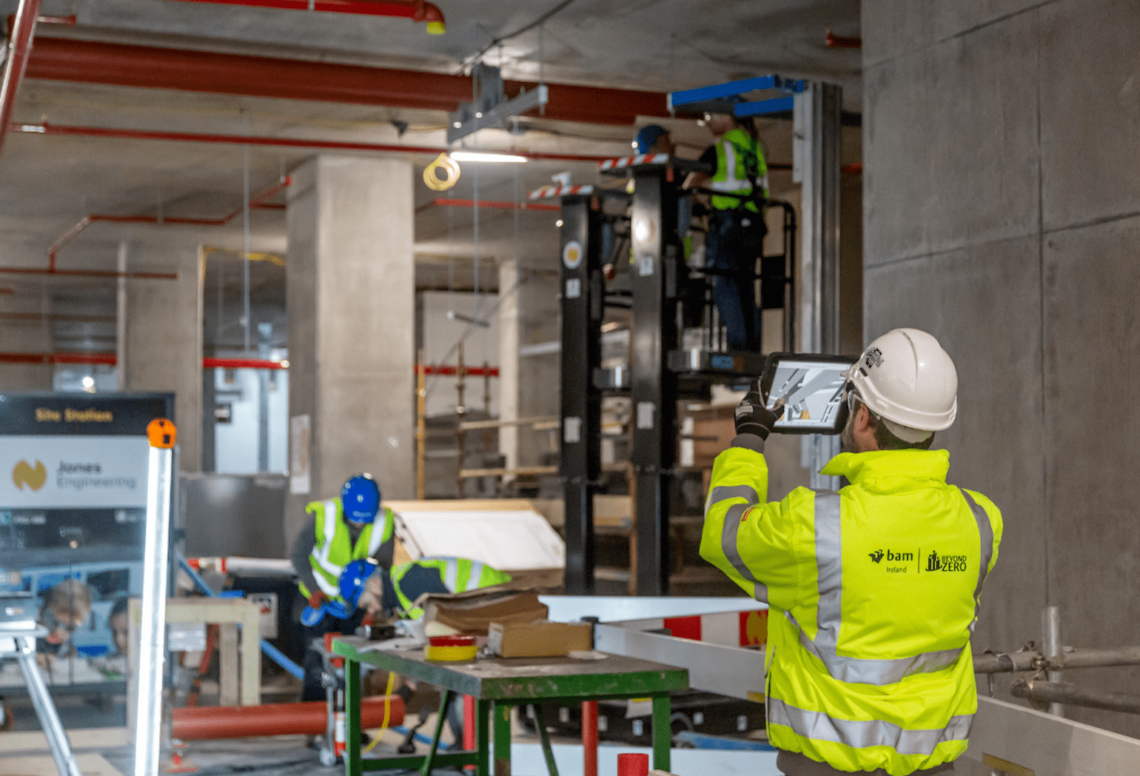The construction industry is facing increased demand for data literacy and real-time business intelligence. It’s seeing how other industries such as manufacturing and retail are capitalising on digital transformation agendas and experimenting with better data collection to streamline project management.
The diverse and complex pressures in the construction industry is a challenge for project members. The industry has to provide faster development, reduced building costs, customer lifecycle management and eco-friendly business decisions. This is leading engineers, architects, contractors and building and facility managers to react differently. Increasingly, more of them are opting for new technology to cut costs and boost productivity.
This is where BIM (Building Information Modeling) comes into the picture. Commonly used for building development and creation of virtual designs, BIM is an end-to-end project management process that saves time and money. BIM is implemented across design and planning to post-construction operations, via different tools and features. It makes every stage of construction efficient and safe, and removes all ambiguity around a project. By covering aspects such as modeling, workflow, construction and handover, BIM virtually ensures a favorable outcome for every project.
The clear advantages of BIM solutions
One of the biggest benefits of BIM that I’ve seen is improved communication and teamwork. BIM delivers a ‘single source of truth’, so all relevant information such as models, design notes, estimates, etc. are stored and shared from a single cloud location. This gives every team member the clarity and precision needed to work effectively. There have been rapid inroads in dealing with conflict resolution due to BIM – something that plenty of construction industry veterans could never previously imagine.
This has massively boosted on-site productivity, as project teams can view updated information directly through their smart devices. The accuracy delivered by BIM has been a game changer, especially with COVID-19 enforced physical distancing regulations and movement restrictions. While initial costs of acquiring and deploying BIM are higher than traditional methods, the long-term cost savings and client service that BIM delivers is priceless.
In fact, BIM opens new opportunities that never existed before in the industry. I am increasingly seeing clients demanding BIM skills and tools from service providers. In other cases, BIM-enabled tools are an advantageous value-added service that helps get more business, and deliver transparency and safety. In the digital age, showing clients that the construction industry is on par with new-age technology and data analytics does more than just get more revenue – it builds long-lasting credibility. The effectiveness of a construction project depends on how fast a structure can be built with minimal rework, and BIM is a 21st century tool that has an impact in the following ways:
Pre-construction
Every project carefully analyses costs of materials, human resources, energy, acoustics, lighting and several others before it begins. Establishing financial feasibility is very important, and BIM provides a newfound degree of accuracy in cost estimations. This gives project managers a realistic estimate, as well as insights into how costs can be reduced.
For instance, project managers can procure cost-effective materials. They can also leverage bargaining power by purchasing materials at a time when the need is not urgent. Some insights also determine if prefabrication of materials or on-site building is cheaper. The entire construction workflow can be streamlined through BIM so that human errors can be minimised, and billable hours can be lowered.
During construction
Over the years, I have found that reducing rework and errors is the most important objective in construction. If there ever was a way to constantly monitor project progress in real-time, industry players would not think twice about adopting such a model to improve the efficiency of building structures and the logistics networks they entail. BIM delivers construction sequencing and scheduling with ‘time’ as the fourth dimension. BIM can accurately predict changes in a construction schedule if structural modifications are made. Furthermore, BIM also makes construction safer by predicting hazards and enabling contractors to successfully meet standards and regulations for worker safety.
Post-construction
BIM tools collect information at every project stage. This makes project evaluation easier as all data can be transparently viewed any time after completion. Changes in materials, personnel, designs etc. can be audited and lessons applied to future projects. Advanced IoT projects can continue to use BIM for sensor mapping and tweaking of running functionalities.
Conclusion
The key takeaway of BIM is interoperability, as it enables every party on a construction project to view what everyone else is doing. The benefits to project efficiency are clear, but what BIM also offers is accountability and real-time visibility. It brings the construction industry on par with other industries that are leveraging technology for predictability and profitability.
If you’d like to learn more about BIM, AEC, or exciting innovations from our customers we invite you to attend any one of our complimentary virtual sessions at Autodesk University from November 17- 20. Register here now! Or connect with the author, Andy Cunningham on LinkedIn.




